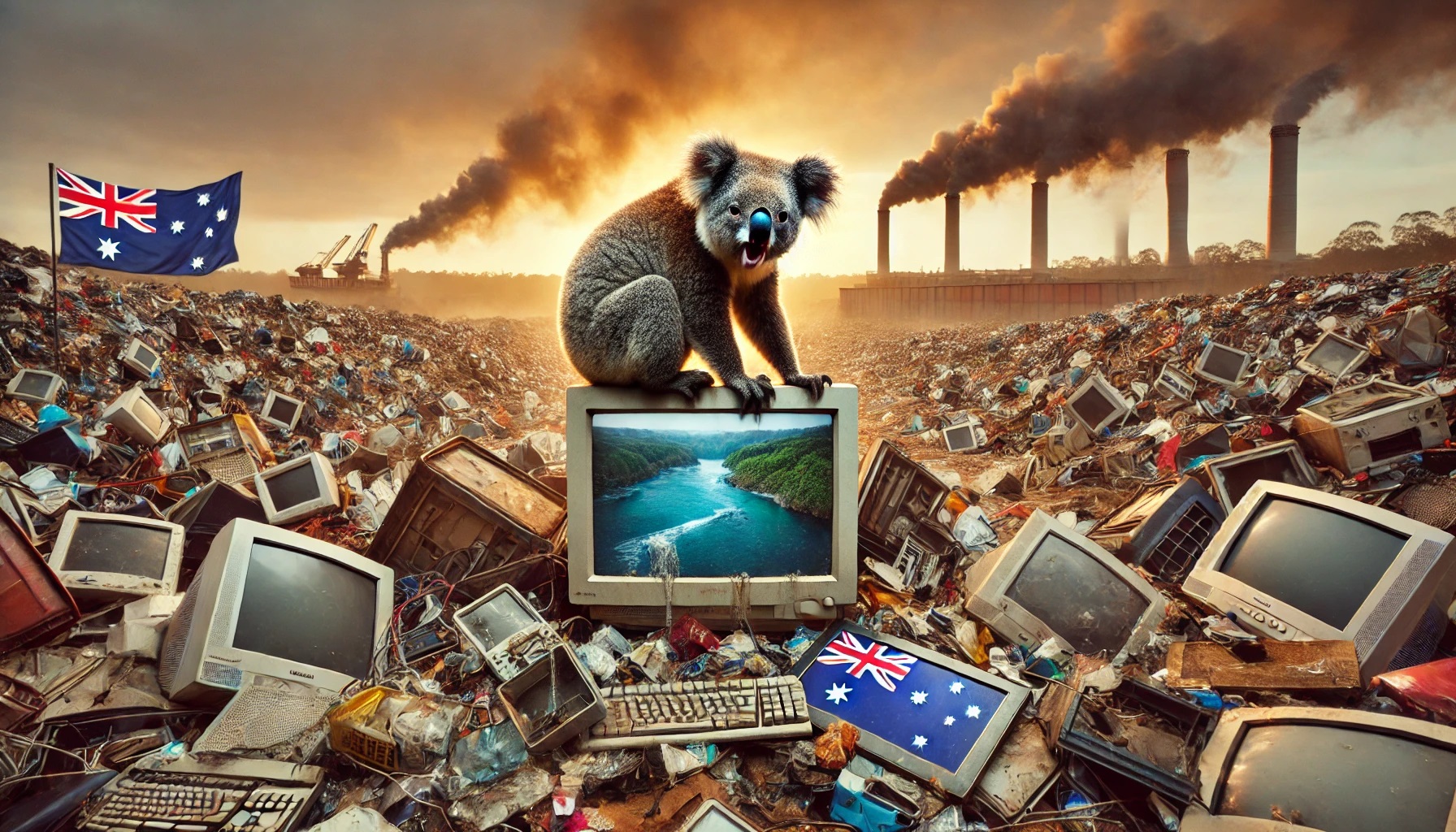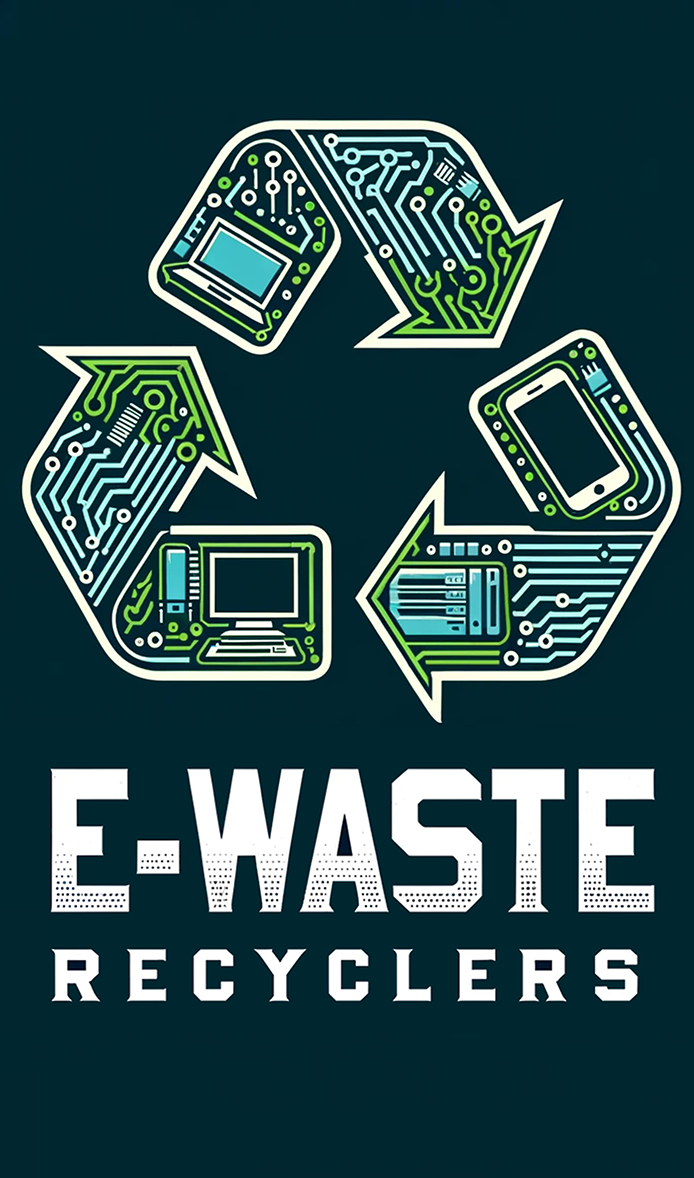Australia’s E-Waste Crisis: A Call to Action for the Nation’s Future

Australia, renowned for its pristine beaches, unique wildlife, and laid-back lifestyle, faces a growing environmental crisis that has largely gone unnoticed by the general public. Electronic waste, or e-waste, is accumulating at an alarming rate across the country, with Australia now ranking as one of the worst contributors to this global problem. In this exposé, we delve into the shocking reality of Australia’s e-waste crisis and explore the urgent need for action.
The Rapid Rise of E-Waste
Recent studies have revealed that Australia’s e-waste generation is growing at an astonishing pace, outstripping the growth of general municipal solid waste by a factor of three. For every tonne of regular waste produced, three tonnes of e-waste are being generated. According to the Australian Bureau of Statistics, Australia generated 600,000 tonnes of e-waste in the 2022-2023 financial year alone, equivalent to 24 kilograms per person.
The Environmental Impact
The improper disposal of e-waste has severe environmental consequences. Electronic devices contain a cocktail of toxic substances, including lead, mercury, and cadmium, which can leach into soil and groundwater when discarded in landfills. These hazardous materials pose a significant threat to human health and the environment. Additionally, the production of electronic devices is resource-intensive, and the failure to recycle ewaste results in the unnecessary extraction of finite resources, contributing to greenhouse gas emissions and climate change.
Impact on Wildlife and Ecosystems
The environmental impact of e-waste is particularly alarming in Australia’s unique ecosystems. For instance, in the wetlands of Kakadu National Park, the leaching of heavy metals from e-waste has been linked to the contamination of water sources, affecting the delicate balance of this World Heritage-listed site. The toxic runoff from landfills has also been found to threaten the habitats of native species such as the iconic koala and the critically endangered northern corroboree frog.
The Great Barrier Reef: A Fragile Wonder at Risk
The Great Barrier Reef, one of Australia’s most iconic natural wonders, is also at risk from the harmful effects of e-waste. The reef is already struggling with issues like coral bleaching and climate change, and now faces additional threats from pollutants leaching into the ocean. Studies have shown that toxic chemicals from improperly disposed of e-waste, such as lead and mercury, can enter the marine ecosystem, causing harm to coral and marine life. These pollutants can disrupt reproductive systems in marine species, weaken corals, and lead to decreased biodiversity in this fragile environment.
Daintree Rainforest: An Ancient Ecosystem Under Siege
The Daintree Rainforest, one of the oldest rainforests in the world, is another area profoundly impacted by e-waste pollution. The leaching of heavy metals and other toxic substances from e-waste into the soil has been observed in areas surrounding the rainforest. This contamination poses a serious threat to the rich biodiversity of the Daintree, affecting plant life and the animals that depend on it. The cassowary, a keystone species critical to the dispersal of seeds throughout the rainforest, is particularly vulnerable to these toxins, which can accumulate in its food sources.
The Way Forward
Addressing Australia’s e-waste crisis requires a multi-faceted approach. The government must prioritise the development of a comprehensive national e-waste recycling scheme, with clear targets and incentives for participation. Public awareness campaigns should be launched to educate Australians about the importance of responsible e-waste disposal and the available recycling options. Additionally, manufacturers and retailers must be held accountable for the end-of-life management of their products, through the implementation of extended producer responsibility (EPR) schemes.
Conclusion
Australia’s e-waste problem is a ticking time bomb that demands immediate attention. As a nation, we cannot continue to bury our heads in the sand while our electronic waste pollutes the environment and endangers human health. It is time for Australia to step up and take decisive action to address this crisis. By investing in recycling infrastructure, promoting public awareness, and holding manufacturers accountable, Australia can transform from a digital dumping ground to a global leader in e-waste management. The future of our environment depends on it. For more information on how you can contribute to responsible e-waste disposal, visit https://ewasterecyclers.com.au.
Is eWaste a problem for your business? It doesn’t need to be.
Stay Informed with the Latest in E-Waste Recycling!
Join our mailing list to receive:
Breaking News: Stay updated on the latest developments in e-waste recycling across Australia.
Legislation Updates: Be the first to know about new laws and regulations affecting e-waste management in Australia.
Business Practices: Gain insights into best practices for sustainable e-waste disposal tailored for Australian businesses.
Expert Tips: Get expert advice on how to manage and reduce your electronic waste effectively.
Sign up today and never miss an update! Simply enter your email address below to join our community of environmentally conscious individuals and businesses in Australia.
